KOOKS FEATURED ON POWER AUTOMEDIA
When deliberating over exhaust header choices, sizing and styles, the best choice will always be specific to individual engine applications
“The best headers are purpose built around engine combination, type of vehicle and style of racing,” says Chris Clark of Kooks Headers and Exhaust, who spoke on the opening day of the Advanced Engineering Technology Conference (AETC) held before the PRI show.
With that premise in mind, Clark offered an example of two 3,000-horsepower engines: one that gets a strong dose of nitrous oxide and the other boosted with turbochargers.
“If we had same size motor with roughly same horsepower output, the turbo headers would be about a quarter inch smaller than nitrous headers,” explains Clark, suggesting that the turbo engine might have 2.125- to 2.250-inch diameter tubes and the nitrous engine would have 2.50-inch or larger tubes. “For nitrous we typically don’t recommend a step, and urge against using merge collectors. However, for turbo, we’ll use smaller diameter tubes and merge collectors in an effort to get the turbos spooling faster.”
Both of these scenarios are for drag race engines where mid-range power and torque are not the priority, just WOT operation where the urgency is to expel large quantities of exhaust gasses quickly. Road-racing engines are not always under WOT and the engine constantly operates under different rpm and throttle positions during the race.
“Under these conditions we’re not solely focused on peak horsepower and torque, rather maximum average horsepower and torque under the rpm curve,” says Clark. “We would experiment with different header primaries and most of the time incorporate a step design. It may have a double bump in the step.”
Again, every application is different if the optimum header is to be built for a specific engine and environment. Clark says his team works closely with engine builders to determine desired operating rpm and power range. Many engines that require fine tuning will be fitted with a tri-Y design, which is a 4-into-2-into-1 arrangement with three Y merges per header.
“With tri-Y you can pinpoint exact frequencies in the exhaust and then build the optimal header length, secondaries and mid collectors to expand the operating torque band,” says Clark, adding that tri-Y headers are usually used in racing because they’re more expensive to manufacture.
Different materials are available for header construction, with mild steel the least expensive but also prone to corrosion. It should be ceramic coated or painted to help resist corrosion. Kooks uses stainless steel for its headers, generally selecting between 409 and 304 grades with the latter recommended for competition.
“304 has a good thermal properties and long lifespan,” says Clark. “Also, it’s repairable.”
Exotic metals like titanium and Inconel are also making inroads into header construction, but they’re seen only in higher forms of racing such as IndyCar and WEC.
“Inconel has similar properties to stainless steel but is much lighter,” says Clark.
Leave a Comment


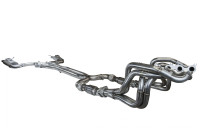 Header Kits
Header Kits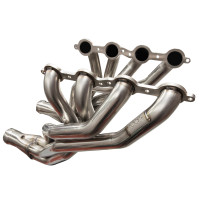 Headers
Headers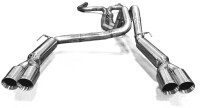 Exhaust
Exhaust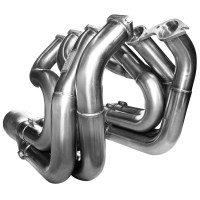 Competition Only
Competition Only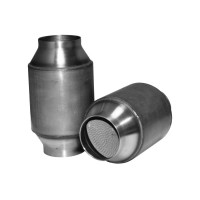 Components
Components Accessories
Accessories Kooks Wear
Kooks Wear Gift Cards
Gift Cards New Product Arrival
New Product Arrival






Leave a Comment